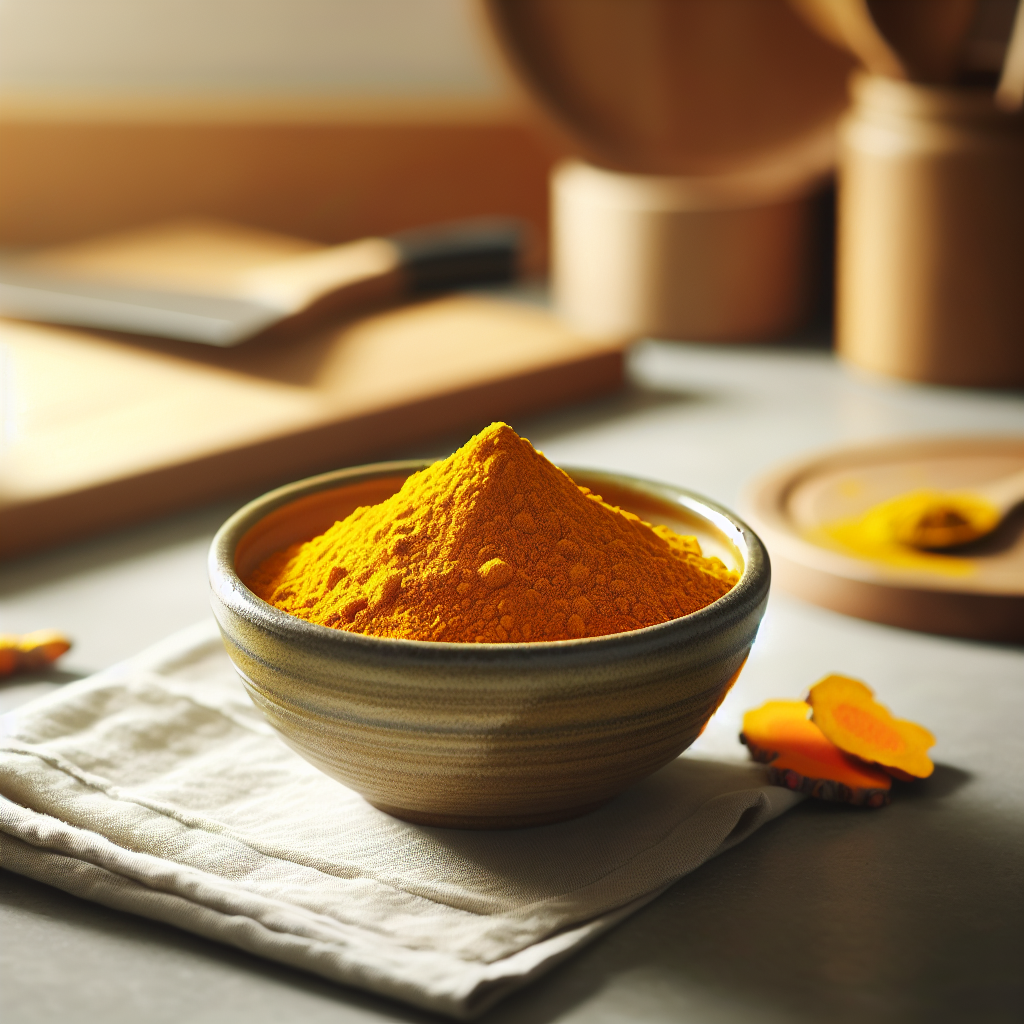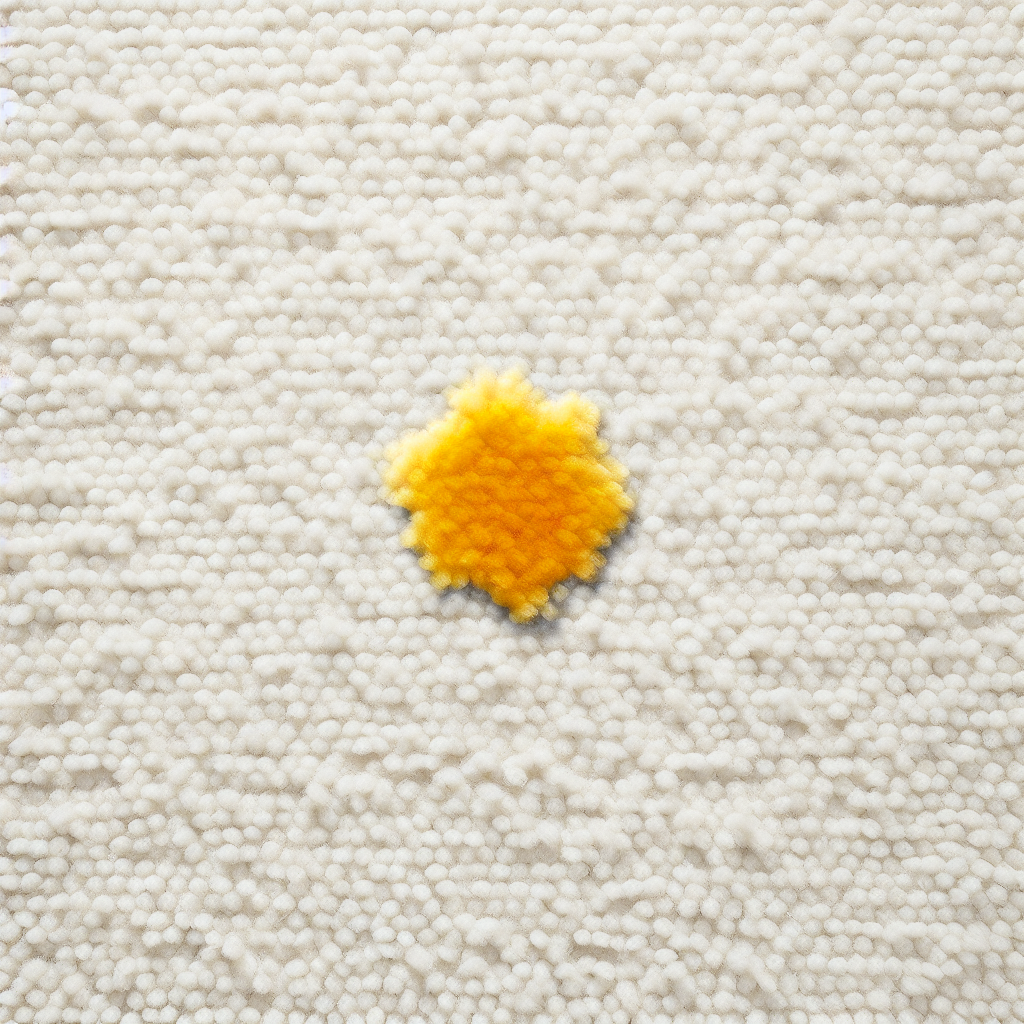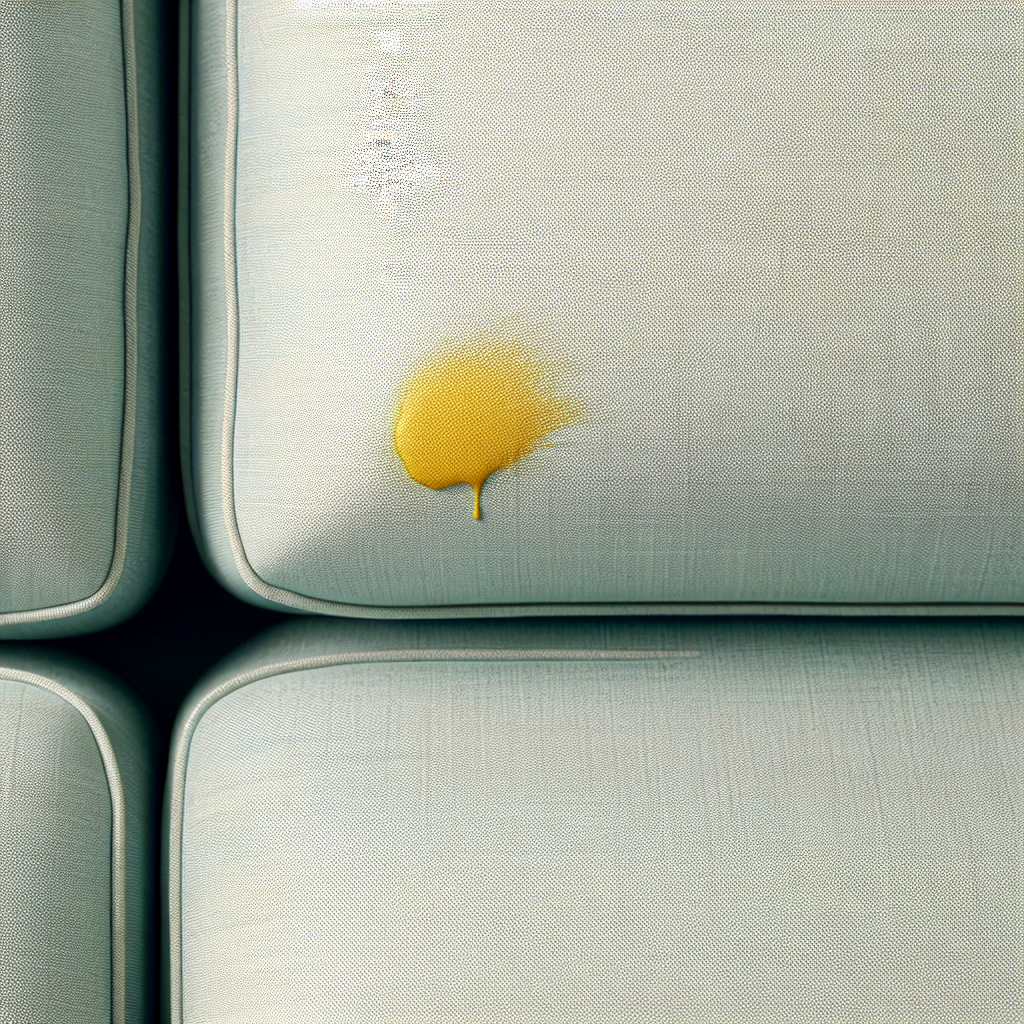How to remove a tumeric stain from carpet or upholstery

Effective Methods for Removing Tumeric Stain
Tumeric stain is often called mustard stain because the primary component of mustard is derived from tumeric. Please note that the terms “tumeric” and “turmeric” are often used interchangebly here.
It is often quite challenging to remove mustard stains from carpets, upholstery and other fabrics. This article provides a comprehensive guide on addressing these stains, incorporating cultural and historical insights, scientific explanations, and both DIY and professional removal methods.
Understanding the Components of Mustard or Tumeric Stains
The Role of Turmeric and Curcumin
Turmeric is a key ingredient in many mustard recipes, prized for its vibrant color and health benefits. The active compound in turmeric, curcumin, is responsible for the intense yellow hue. Curcumin binds tightly to fabrics and fibers, making mustard stains particularly difficult to remove. This binding property not only causes immediate discoloration but also complicates the cleaning process.
The Science Behind Yellow Stains
Yellow stains, especially from mustard, are tough to remove due to the presence of curcumin, a compound found in the tumeric stain. Curcumin has a strong yellow color because of its unique chemical structure, which absorbs and reflects light. This structure also makes curcumin bond tightly with fabrics and surfaces. Curcumin is also used in curries and other foods.
When curcumin comes into contact with materials, it interacts strongly with the fibers, making the stain very persistent.
Curcumin is difficult to clean because it does not dissolve easily in water. This makes it challenging to remove using regular cleaning methods.
Curcumin can bond with metal ions and other elements in fabric or cleaning agents, keeping them in place. This bonding is strong. It helps to keep the elements in place.
To effectively remove these stains, specialized cleaning agents like oxidizing agents (e.g., hydrogen peroxide) are often needed. These agents break down the chemical structure of curcumin, which helps to lighten and eventually remove the yellow color. However, the complex mix of ingredients in mustard, including oils and other pigments, can make the cleaning process even more challenging, requiring a combination of approaches to fully remove the stain (DiscoverTurmeric.com).
Other Common Yellow Dyes and Their Effects on Different Materials
In addition to mustard, other common yellow dyes can also cause stubborn stains on different materials. These include:
-
Tartrazine (Yellow No. 5):
- Sources: Found in many food products, beverages, and medications.
- Effects on Materials: Tartrazine can cause bright yellow stains on fabrics, plastics, and countertops. These stains are often water-soluble but can require repeated washing to fully remove from fabrics (Reader’s Digest).
-
Annatto:
- Sources: Derived from the seeds of the achiote tree, used in cheeses, butter, and snack foods.
- Effects on Materials: Annatto stains are less intense than turmeric but still challenging to remove, especially from porous surfaces like fabrics. They can usually be treated with soap and water or mild bleach solutions (LoveToKnow).
-
Saffron:
- Sources: A spice derived from the flower of Crocus sativus, used in cooking.
- Effects on Materials: Saffron stains are known for their deep yellow to orange color. These stains can be tough to remove from fabrics and require immediate action with cold water and soap, followed by stronger cleaning agents if necessary.
-
Synthetic Dyes (e.g., Acid Yellow 23):
- Sources: Used in textiles, leather, and paper products.
- Effects on Materials: These dyes are designed to be colorfast, meaning they are resistant to fading and washing out. Removing these stains typically requires commercial stain removers or professional cleaning services (Gaia Herbs).
-
Curcumin (from Turmeric):
- Sources: Used in mustards, curries, and other foods.
- Effects on Materials: Curcumin stains are particularly persistent due to their ability to form strong chemical bonds with fabrics and surfaces. Effective removal requires oxidizing agents like hydrogen peroxide or specific enzymatic cleaners (Puracy).
Knowing how yellow dyes work with materials is important for creating good stain removal methods. This will help you to understand how to get tumeric stain out of carpet and upholstery.
Each dye has unique challenges. Knowing how to clean it properly can help maintain the appearance and strength of the affected materials and surfaces.
Cultural and Historical Uses of Tumeric
Historical Significance
Turmeric has a rich history that dates back thousands of years, particularly in South Asia. Originating from the rhizomes of the Curcuma longa plant, turmeric has been a staple in Indian culture and beyond. It has been used extensively in cooking, not only for its flavor and color but also for its preservative qualities. Ancient Indian texts, such as the Ayurveda, highlight turmeric’s medicinal properties, noting its use in treating various ailments, from digestive issues to skin conditions. The spice’s anti-inflammatory and antioxidant properties have been recognized and utilized in traditional medicine for centuries.
Furthermore, turmeric’s role as a natural dye is well-documented. It was used to color fabrics and other materials in vibrant yellow hues long before synthetic dyes were developed. The process involved boiling the turmeric with the fabric, allowing the curcumin to bind with the fibers, producing a bright and lasting color. This historical usage underscores both the beneficial properties and the staining potential of turmeric, which has been harnessed in various applications over time.
Cultural Practices
In many cultures, turmeric is more than just a spice; it holds profound ceremonial and medicinal significance. In India, one of the most notable traditions involving turmeric is the Haldi ceremony, an integral part of Hindu weddings. During this ritual, a paste made from turmeric, sandalwood, and other ingredients is applied to the bride and groom’s skin. This practice is believed to purify the couple, symbolizing their preparation for a new life together. The bright yellow color of the paste also signifies prosperity and good luck.
Turmeric’s cultural significance extends beyond weddings. In Ayurvedic and Unani systems of medicine, turmeric is revered for its therapeutic properties. It is used in various treatments, including those for respiratory conditions, liver disorders, and wounds. The spice is also a key component in beauty regimens, with turmeric masks being popular for their skin-brightening and anti-inflammatory effects.
In Southeast Asia, turmeric is used in traditional ceremonies and daily life. Moreover, in Thailand, it is part of traditional medicine and is used in religious rituals to purify and bless spaces and objects. In Indonesia, turmeric is a crucial ingredient in Jamu, a traditional herbal drink that promotes health and well-being.
Despite its widespread use and numerous benefits, turmeric’s potent staining ability is well-known. Handling turmeric requires care to prevent unwanted yellow marks on fabrics and surfaces, a testament to its strong dyeing properties. This dual role of turmeric—as a beneficial spice and a powerful dye—highlights its multifaceted importance in cultural and historical contexts.
How to get tumeric stain out
Initial Actions
When a mustard spill occurs, immediate action is crucial to prevent the stain from setting. Here’s how to remove tumeric stains. Begin by gently blotting the stain with a clean cloth or paper towel to absorb as much of the mustard as possible. Avoid rubbing, as this can spread the stain and push it deeper into the fibers.
Homemade Cleaning Solutions
Several effective homemade diy solutions can help tackle mustard stains. Here are a few:
- Vinegar and Baking Soda: Mix equal parts white vinegar and baking soda to form a paste. Apply the paste to the stain, let it sit for a few minutes, then scrub gently with a soft brush.
- Lemon Juice: Apply lemon juice directly to the stain, let it sit for 10-15 minutes, then rinse with cold water and blot dry.
- Dish Soap: Mix a few drops of liquid dish soap with warm water. Dab the solution onto the stain with a cloth, then blot with a dry towel.
Professional Tumeric Stain Removal Methods
When to Call a Professional
In cases where mustard stains are extensive or have set deeply into the fabric, a diy stain remover may not work, so professional cleaning may be necessary. Professionals have access to industrial-grade cleaning agents and specialized equipment that can effectively remove stubborn stains without damaging the material.
Professional Techniques
Professional cleaners employ various techniques to remove mustard stains, including:
- Steam Cleaning: High-temperature steam can help break down and lift stains from carpet and upholstery fibers.
- Enzyme Cleaners: These cleaners break down the organic compounds in mustard, making it easier to remove the stain.
- Dry Cleaning: For delicate fabrics, dry cleaning can safely and effectively remove mustard stains without causing damage.
Preventative Measures
Tips to Avoid Future Tumeric Stains
Preventing mustard stains is often easier than removing them. Here are some tips:
- Use Spill-Proof Containers: When using mustard, opt for containers that minimize spills.
- Protective Covers: Use placemats or protective covers on surfaces during meals.
- Immediate Cleanup: Clean up spills immediately with a damp cloth to prevent the stain from setting.
Maintenance and Care
Regular maintenance of carpets and upholstery can help reduce the risk of permanent stains. Schedule regular cleanings and use fabric protectors to keep your items in good condition.
Conclusion
Mustard stains can be challenging due to the presence of turmeric and curcumin, which cause intense yellow discoloration. Understanding the science behind these stains and utilizing effective cleaning methods, both DIY and professional, can help maintain the appearance of your carpets and upholstery. Additionally, implementing preventative measures can minimize the risk of future stains, ensuring your home remains stain-free.
By addressing mustard stains promptly and using the right techniques, you can keep your fabrics looking their best and avoid the frustration of persistent yellow marks.





